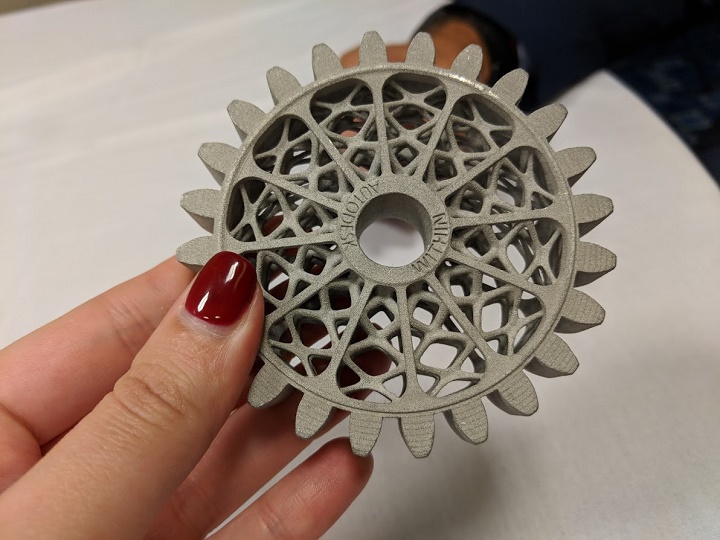
Metal Jet took center stage at IMTS.
The new metal 3D printing technology from HP, officially announced a year ago and launched last week in Chicago, was highly anticipated. As a guest of HP Inc. at IMTS, I appreciated the opportunity to spend significant time getting to know the newest technology from the company’s 3D Printing business.
Multi Jet Fusion (MJF), HP’s plastics technology, was introduced at RAPID 2016 to great fanfare. The choice to launch Metal Jet at a trade show dedicated to manufacturing — not one specific to additive manufacturing like RAPID + TCT — was a bold statement for a company fond of bold statements. HP 3D Printing has announced again and again its intention to see this technology “disrupt the $12 trillion global manufacturing industry.”
MJF has been making notable impact in production, including the 3D printing of a significant number of parts in the Jet Fusion 3200 industrial system and more than 140 parts in the newer 300/500 line of multi-color-capable 3D printers. Taking a step forward in production applications with Metal Jet, HP is starting on its metallurgical track with strong, high-profile collaborators including GKN Powder Metallurgy and Volkswagen.

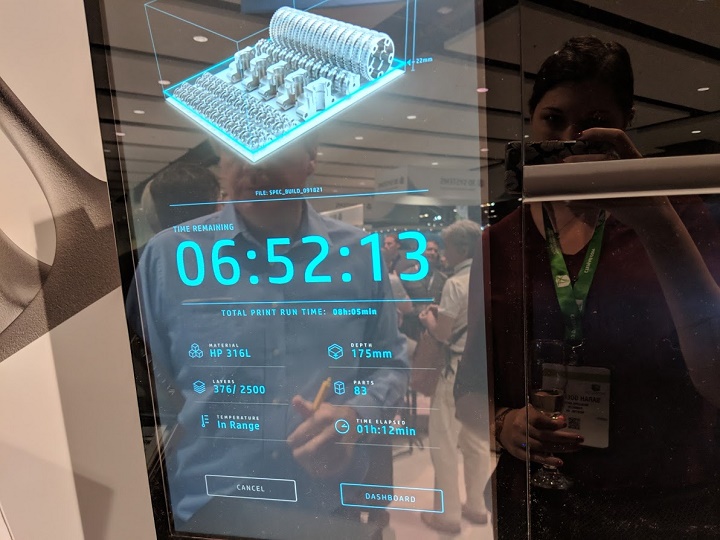
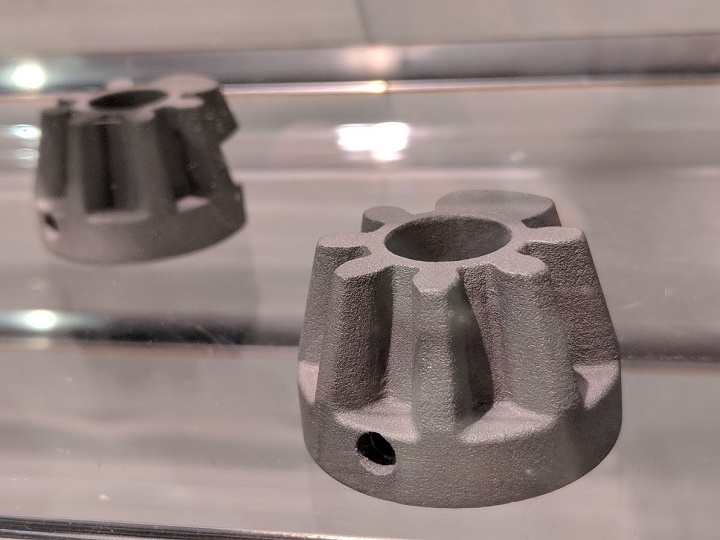

At IMTS, HP, GKN, and VW took to the stage at the Additive Manufacturing Conference as well as in a quieter conversational press conference and partner-fronted round tables.
Through these sessions, as well as a sitdown with Dr. Tim Weber, Global Head of 3D Metals for HP, additional opportunities to dig deeper into the Metal Jet story presented.
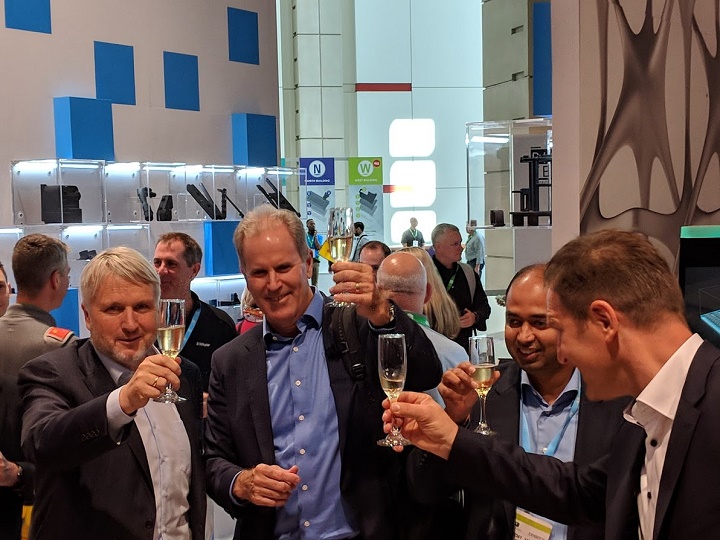
“HP has often been asked if we’re getting into metals, and we knew we needed three things for that to happen,” Stephen Nigro, President of HP’s 3D Printing Business, explained during his AM Conference keynote, naming:
-
Disruptive technology
-
Superior economics
-
Breakthrough quality
Ultimately for the industries being targeted — such as aerospace, medical devices, industrial equipment, and automotive — what matters is what is being made, Nigro underscored. Part quality, fulfilling requirements of ASTM and ISO standards, must combine with a compelling economic argument for bringing 3D printing into production.
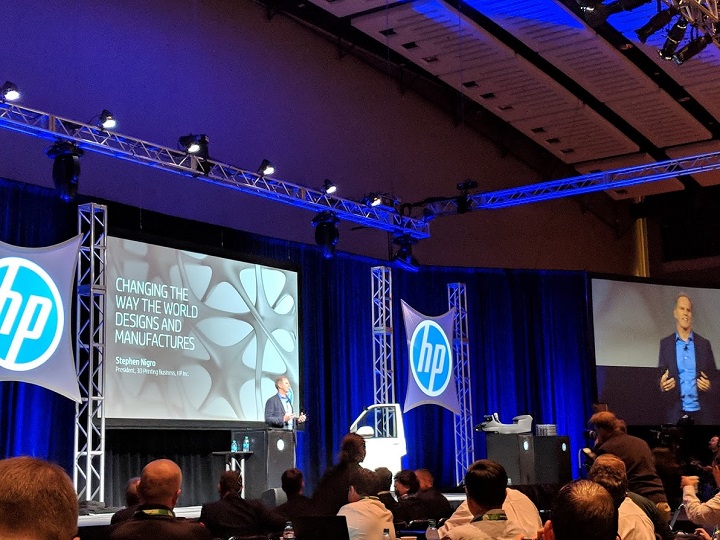
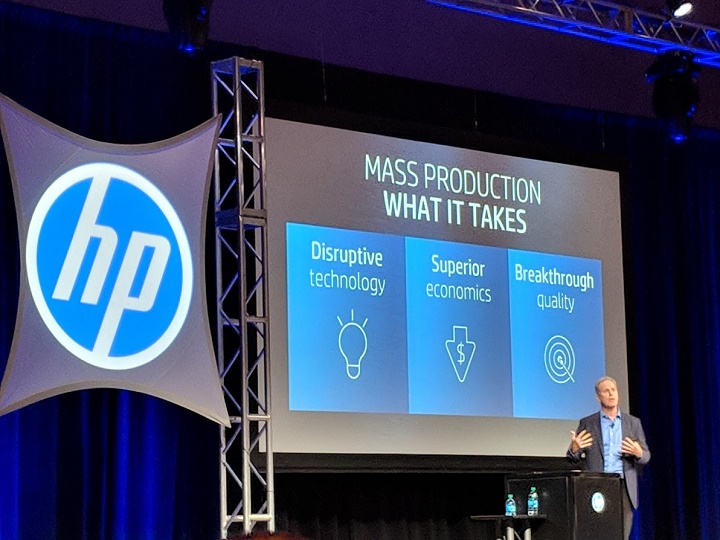
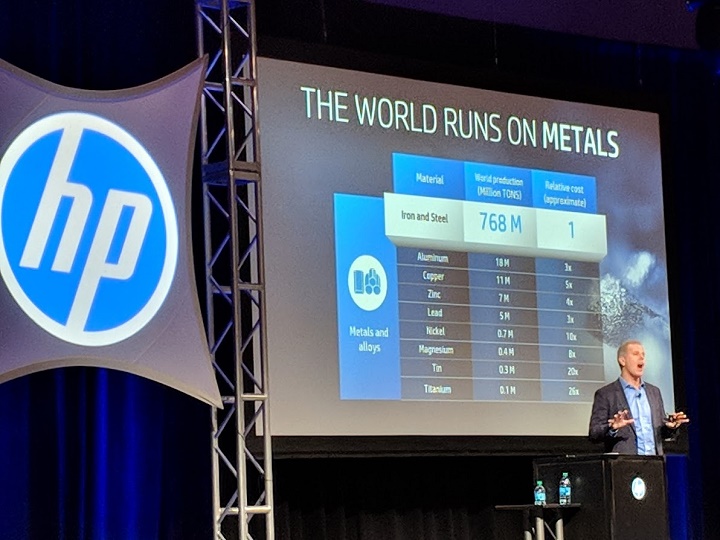
HP has developed with its partners a multi-year plan for the rollout of Metal Jet technology. The company is making parts now with GKN and Parmatech, working with select customers for production parts. In 2019, there will be broader availability with the production service; the next year will see select availability of Metal Jet systems, which will be broadly available in 2021.
The CEO of GKN Powder Metallurgy, Peter Oberparleiter, and the Head of Technology Planning and Development at Volkswagen, Dr. Martin Goede, joined Nigro onstage in the keynote session to discuss their experiences with and deployments of Metal Jet technology.
“We are very excited to work with partners like HP to continue to drive additive manufacturing into the future,” Oberparleiter said. “We got a call from HP and were excited; we went to their lab in Corvallis and immediately understood the value proposition. Digital is in our heart. This was about a year ago, and here we are now.”
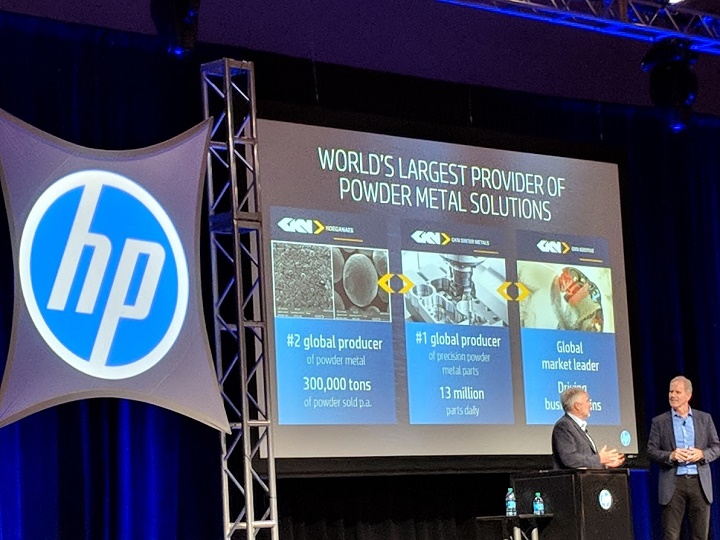
He noted the freedom of design GKN and its customers are experiencing now, pointing to the need for engineers to “understand what can be done” with additive. Benefits in lightweighting, time to market, tooling, and scalable production are, he says, “huge advantages leading to the next stages of production.”
Today at Volkswagen, Goede noted, the team is applying Metal Jet for mass customization in automotive operations. From 2019, they will move toward functional production, and from 2021, look toward safety certified applications on new platforms such as EVs.
“In three, maybe five, years, the real intention is to make use of this technology in our functional platforms. We will complement tooling and production with additive,” Goede said.

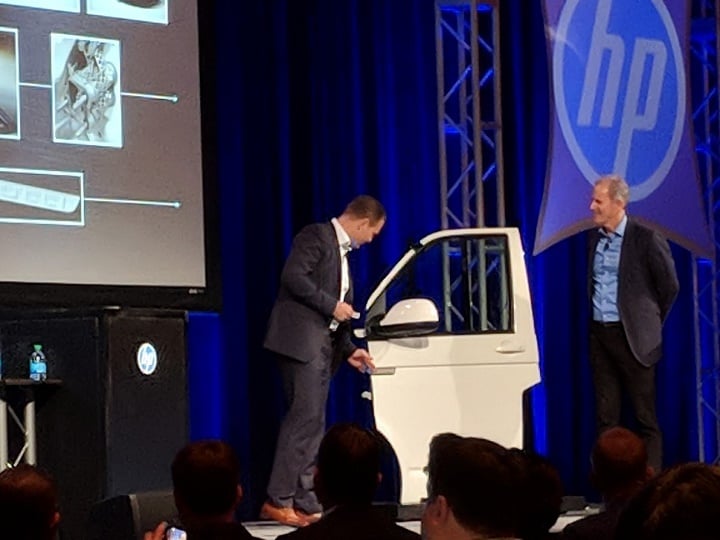
This journey can start now, Nigro added, as the Metal Jet Production Service can be engaged now as users can explore, test, and become familiar with it ahead of services in 2019.
“Additive is in a place today where it can go into production. The key to starting the journey is to understand how to design differently,” he concluded.
In an executive press conference following the large session, a Q&A-style discussion between engaged press and analysts and execs from HP, GKN, VW, and Parmatech provided more insights into the partnerships and the launch strategy.
For VW’s part, Goede said, they see Metal Jet as enabling them to increase competitiveness through individualization and design freedom for structural parts. GKN, Oberparleiter continued, is thinking of deployments in high-volume production and seeing the benefits of not needing a tool. Parmatech, President Rob Hall said, sees that there are more design freedoms with Metal Jet than with injection molding, adding:
“We absolutely could with this technology manufacture any design we make today.”

Ensuring this messaging is delivered, Global Head of 3D Metals Dr. Tim Weber continued, HP is working to develop design rules for Metal Jet with their design team and their customers “so engineers, designers, mechanical engineers will have all the knowledge they need to optimize design.”
“There is a lot of complexity we can take out of the manufacturing process,” Oberparleiter noted of a major advantage enabled via additive.
Expanding on the metallurgical perspective, a round table session with GKN Powder Metallurgy highlighted this customer experience and prominent adoption case for additive manufacturing.
CEO Oberparleiter was joined by Chris Franks, President Commercial; and Guido Degen, Additive and Business Development in this discussion.
“GKN Additive has been solidly an agenda for about two years,” Franks said. “There’s a marketing and development side and it is a complement to our part-making division. GKN Additive combines these to work toward what we think will be the fastest-growing for metal powders.”
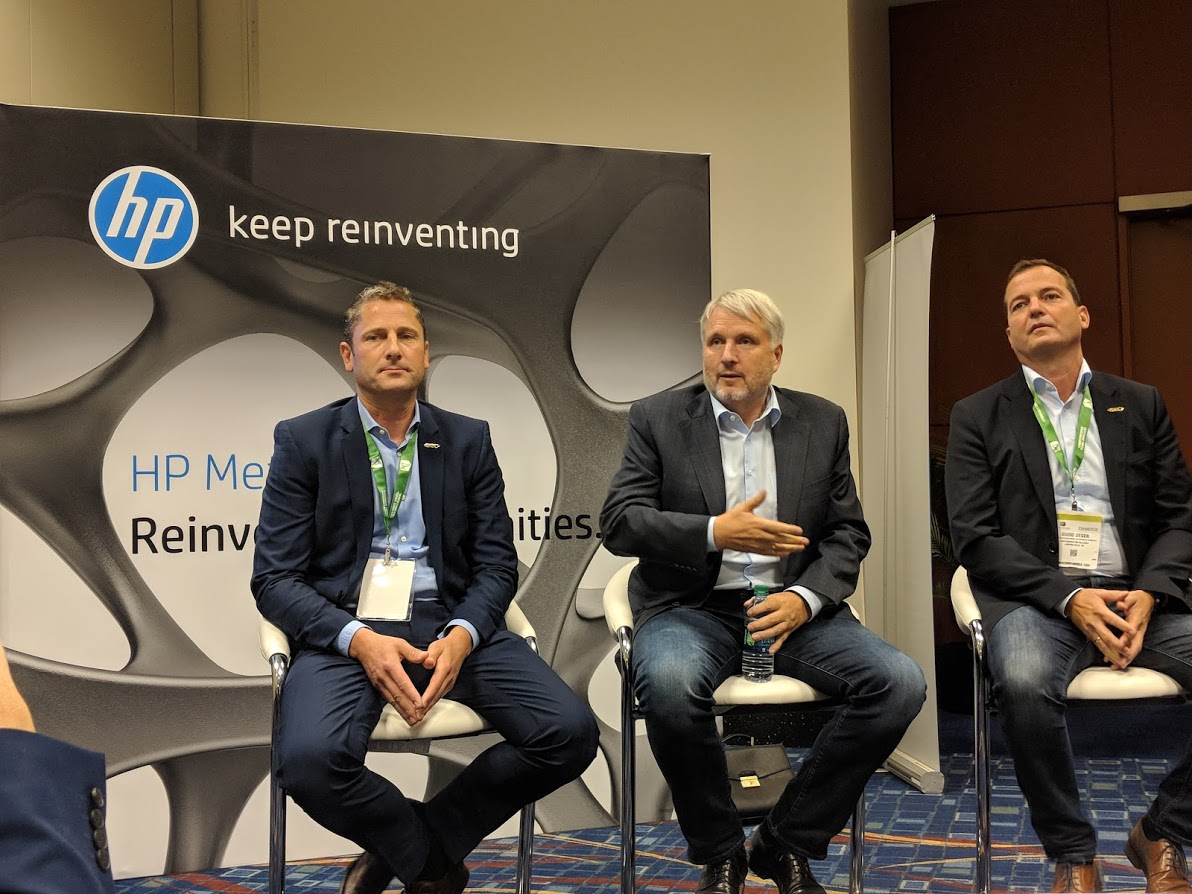
And the company knows metal powders, Degen added. Their additive manufacturing journey started with lasers at a manufacturing site in Germany that year one was producing 10,000 parts. They are now seeing increasing opportunities mostly in industrial and automotive, where their customers are. The company has 12-13 SLM machines running and is now expanding binder jetting from an R&D initiative into a first installation.
“What HP shows is a combination we have been missing for production,” Degen said. “We have material plus machine.”
Franks added to this that the mechanical properties and volume allow for the “needed scale for our technology to be relevant.” He was sure to note that GKN sees Metal Jet as a “great complement to our current technology, not a replacement” as the company continues to work with other additive manufacturing technologies.
Metal Jet is beginning with stainless steel; GKN typically uses aluminum for prototyping. The conversation about materials will be ongoing, the GKN Powder Metallurgy team, as they continue to work with HP and as Metal Jet advances.
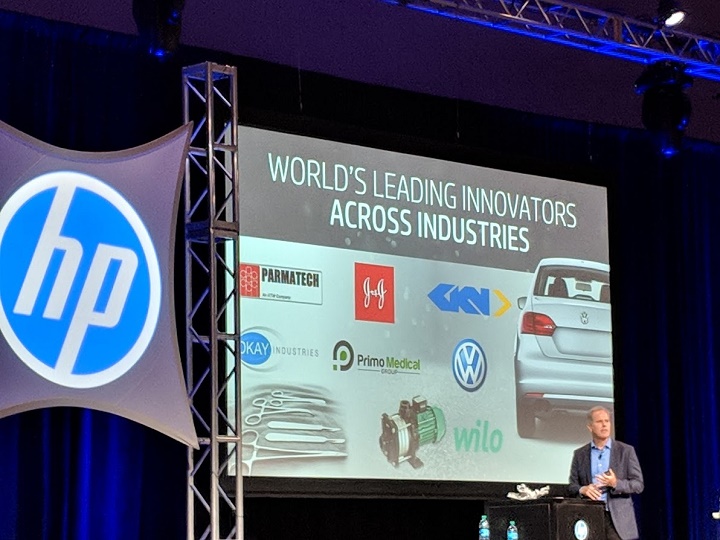
In addition to these speaking sessions, I appreciated an opportunity to sit down with HP’s Weber for a chat about Metal Jet at IMTS; his input here.
[All images: Fabbaloo]











The debate over use of proprietary or open materials ecosystems is becoming a big topic in 3D printing.